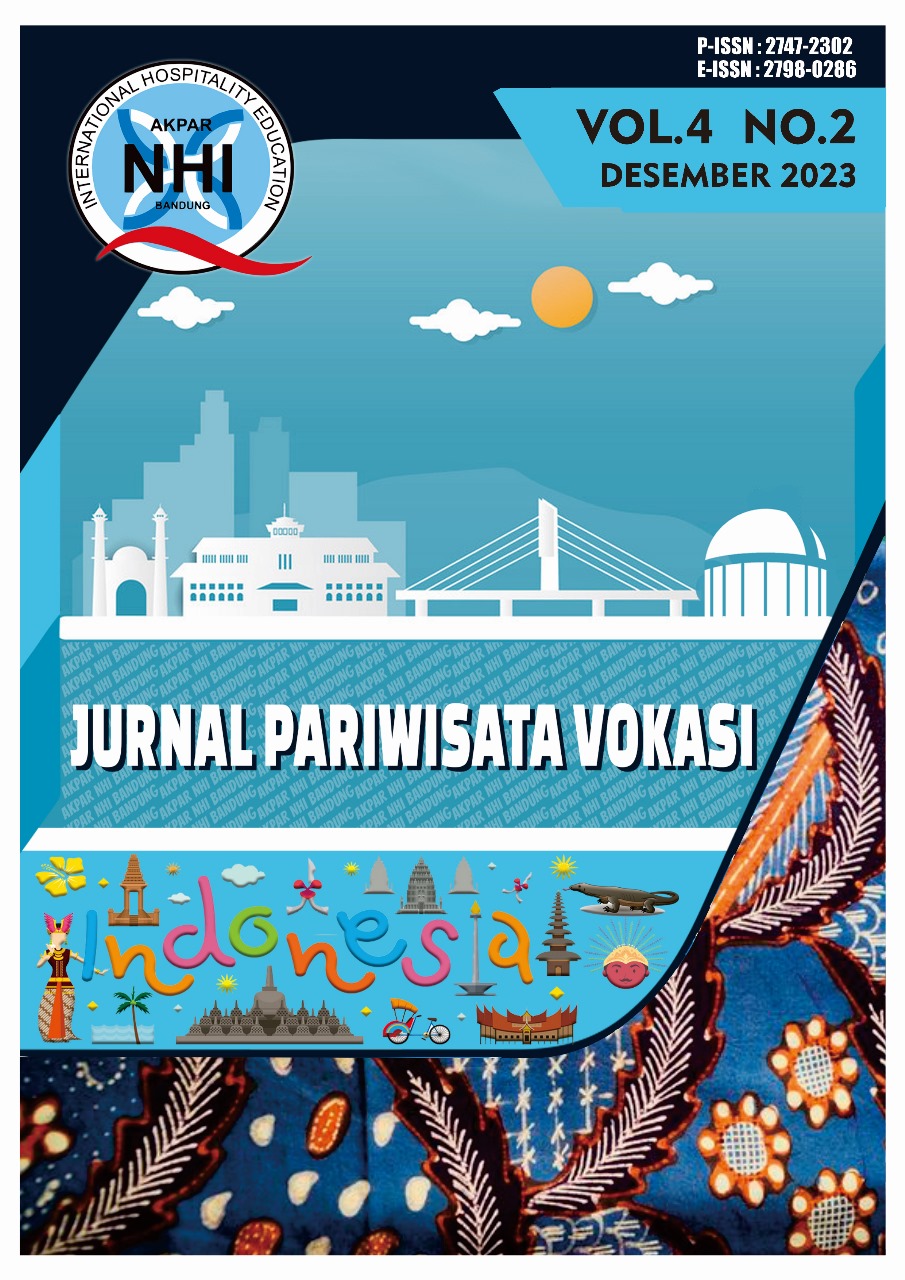ANALISIS IMPLEMENTASI POSITIONING DI COFFEE TEA & STUDIO ROSID BERDASARKAN PERSEPSI KONSUMEN
DOI:
https://doi.org/10.60038/jpv.v4i2.83Keywords:
Positioning, Persepsi Konsumen, CafeAbstract
Coffee Tea & Studio Rosid is a café and art studio in Bandung that offers food and beverages. This place, rich in cultural elements and artistic creations, has its own distinctive characteristic. The purpose of this research is to determine the application of positioning at Coffee Tea & Studio Rosid, including attributes, benefits, usage/application, product category, price, and quality, based on consumer perceptions. The research method employed is quantitative research with descriptive and verification statistical analysis. The population in this study consists of consumers who have visited and purchased products at Coffee Tea & Studio Rosid. The number of respondents in this research is 100 people. Data collection techniques include interviews with the owner and staff, as well as the distribution of questionnaires to Coffee Tea & Studio Rosid consumers. Data analysis techniques involve multiple linear regression.
The results of the research indicate that positioning has a positive and significant impact on consumer perceptions. The hypotheses are further supported by using the F-test and t-test, each comparing the calculated F and t values with the respective table values. The F-test results show that the calculated F value > F table (50.92 > 2.31), leading to the conclusion that there is a simultaneous influence of independent variables on the dependent variable. The t-table is used to assess the influence of each independent variable on the dependent variable. The calculated t value for the positioning variable in all dimensions shows a t value > 1.986, confirming the acceptance of the hypothesis for this variable. Therefore, it can be concluded that the variables that have a positive and significant impact on consumer perceptions are attributes, benefits, usage/application, product category, price, and quality.
References
Arief, Rachman, & Abd. (2005). Pengantar llmu Perhotelan dan Restoran. Graha
Ilmu.
Kotler, P. (1997). Principles of marketing (4th ed.).
Kotler, P. (2002). Analisis Manajemen Pemasaran , Perencanaan, lmpementasi dan Pengendalian. 1(3), 89.
Pradesyah, R. (2017). Analisis Pengaruh Non Performing Loan, Dana Pihak Ketiga, Terhadap Pembiayaan Akad Mudharabah di Bank Syariah. lntiqad: Jurnal Agama Dan Pendidikan lslam, 9(1),93-111. https://doi.org/10.30596/intiqad.v9i1.1 085
Sunaryo. (2004). Syarat Terjadinya Persepsi. EGC.
Tjiptono, F. (2008). Strategi Pemasaran (3rd ed.). Andi.
Toha, M. (2003). Perilaku Oganisasi Konsep Dasar dan Aplikasinya. Raja Grafindo Persada.
Wilson A, Z. V. B. M. G. D. (2008). Services marketing: integrating customer focus across the firm. (First European). McGraw Hill.






